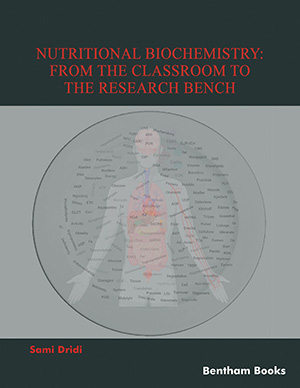
Abstract
Coffee is the most extensively consumed drink in the world. However, in the last few years, unroasted coffee seeds, popularly known as green coffee beans (GCB), attracted people due to its health properties. This review covers pharmacological efficacy, mechanism of action and bioactive components of green coffee beans. It contains a unique set of polyphenolic compounds, methylxanthines and diterpenes which are responsible for the astringency, flavour, smell and taste as well as for its health benefits. Chlorogenic acid, a polyphenolic compound, is the major bioactive compound in coffee beans which contributes most to the medicinal activities present in it. The finding reveals the effectiveness of green coffee beans in all parameters of metabolic syndrome by regulating adipokines. It prevents doxorubicin induced cardiomyocyte cell death and also has antimutagenic activity on the HeLa cell line and PA-1 cell line. Neuroprotective effect of GCB in degenerative disease was achieved by reducing neuroinflammatory markers TNF-α (tumor necrosis factor-α) and IL-1β (interleukin-1β). Along with these properties, GCB has shown some potential antimicrobial, hepatoprotective, cardioprotective and sunscreen effects, as it contains a high sun protection factor. The findings from this study conclude that green coffee beans have shown bizarrely several health benefits, but a large number of trials and intervention are required to establish its medicinal values.
Keywords: Bioactive, compounds, chlorogenic acid, coffee bean, therapeutic, properties.
[http://dx.doi.org/10.1016/j.foodchem.2008.10.025]
[http://dx.doi.org/10.1080/10408390500400009] [PMID: 16507475]
[http://dx.doi.org/10.1016/j.foodres.2013.06.006]
[http://dx.doi.org/10.1016/j.foodchem.2007.06.053]
[http://dx.doi.org/10.1590/S1677-04202006000100003]
[http://dx.doi.org/10.1016/j.apjtm.2016.05.017] [PMID: 27393090]
[http://dx.doi.org/10.3136/fstr.15.147]
[http://dx.doi.org/10.1021/jf8037117] [PMID: 19298065]
[http://dx.doi.org/10.1016/j.foodchem.2003.12.020]
[http://dx.doi.org/10.1007/s00217-014-2356-z]
[http://dx.doi.org/10.1021/jf0518305] [PMID: 16417293]
[http://dx.doi.org/10.1016/j.foodchem.2005.07.032]
[http://dx.doi.org/10.1111/j.1365-2621.2010.02464.x]
[http://dx.doi.org/10.1016/B978-0-12-805376-8.00019-8]
[http://dx.doi.org/10.1007/s13197-014-1646-6] [PMID: 26344987]
[http://dx.doi.org/10.1016/j.jfca.2013.09.002]
[http://dx.doi.org/10.3390/ijms20174238] [PMID: 31480213]
[http://dx.doi.org/10.1016/j.jfca.2013.01.007]
[http://dx.doi.org/10.1186/1472-6882-6-9] [PMID: 16545124]
[http://dx.doi.org/10.1155/2014/718379]
[http://dx.doi.org/10.1080/26895293.2020.1781698]
[http://dx.doi.org/10.1186/s13104-020-05052-y] [PMID: 32276657]
[http://dx.doi.org/10.1007/s10298-006-0181-7]
[PMID: 28917230]
[http://dx.doi.org/10.22159/ajpcr.2017.v10i9.19329]
[http://dx.doi.org/10.3923/rjmp.2016.89.97]
[http://dx.doi.org/10.1080/09637486.2019.1585763] [PMID: 30907200]
[http://dx.doi.org/10.1016/j.eujim.2019.05.001]
[http://dx.doi.org/10.1590/S0102-695X2013005000036]
[http://dx.doi.org/10.5812/hepatmon.45609]
[http://dx.doi.org/10.1016/j.ctim.2019.102290] [PMID: 32147076]
[http://dx.doi.org/10.1291/hypres.25.99] [PMID: 11924733]
[http://dx.doi.org/10.1291/hypres.28.711] [PMID: 16419643]
[http://dx.doi.org/10.1080/10641960600798655] [PMID: 16820341]
[http://dx.doi.org/10.4103/0976-237X.156036] [PMID: 26097349]
[http://dx.doi.org/10.7860/JCDR/2017/25743.9898] [PMID: 28658911]
[http://dx.doi.org/10.1007/s11011-020-00583-6] [PMID: 32548708]
[http://dx.doi.org/10.1179/1476830511Y.0000000027] [PMID: 22305652]
[http://dx.doi.org/10.1080/1028415X.2018.1468535] [PMID: 29712510]
[http://dx.doi.org/10.1016/j.neures.2019.05.001] [PMID: 31121203]
[http://dx.doi.org/10.1038/nm.2627] [PMID: 22395709]
[http://dx.doi.org/10.1111/j.1753-4887.2011.00456.x] [PMID: 22221213]
[http://dx.doi.org/10.33549/physiolres.931863] [PMID: 20945960]
[http://dx.doi.org/10.1016/j.diabres.2011.10.029] [PMID: 22079683]
[http://dx.doi.org/10.1371/journal.pone.0120842] [PMID: 25849026]
[http://dx.doi.org/10.1038/hr.2011.195] [PMID: 22072103]
[http://dx.doi.org/10.1038/hr.2009.132] [PMID: 19713967]
[http://dx.doi.org/10.1016/S0016-5085(99)70506-8] [PMID: 10348825]
[http://dx.doi.org/10.1038/nrgastro.2013.171] [PMID: 24042449]
[http://dx.doi.org/10.1111/bcp.12899] [PMID: 26852185]
[http://dx.doi.org/10.3390/nu5051544] [PMID: 23666091]
[http://dx.doi.org/10.1186/s12906-016-1258-y] [PMID: 27495925]
[http://dx.doi.org/10.1016/j.amjmed.2005.11.015] [PMID: 16887414]
[http://dx.doi.org/10.1371/journal.pone.0186196] [PMID: 29045483]
[http://dx.doi.org/10.1161/JAHA.119.013479] [PMID: 31630587]
[http://dx.doi.org/10.1016/j.cropro.2012.03.012]
[http://dx.doi.org/10.1016/j.cropro.2012.11.006]
[http://dx.doi.org/10.4103/2321-8568.190316]
[http://dx.doi.org/10.3233/JAD-2010-100012] [PMID: 20413858]
[http://dx.doi.org/10.1007/s11011-019-00448-7] [PMID: 31286327]
[http://dx.doi.org/10.4239/wjd.v5.i6.889] [PMID: 25512792]
[http://dx.doi.org/10.3390/ijms22010107] [PMID: 33374338]
[http://dx.doi.org/10.1159/000475895] [PMID: 28588361]
[http://dx.doi.org/10.1271/bbb.70670] [PMID: 18323641]
[http://dx.doi.org/10.1590/0001-3765202120210481] [PMID: 34730624]
[http://dx.doi.org/10.1080/10408398.2018.1461061] [PMID: 29624417]
[http://dx.doi.org/10.1080/09168451.2017.1345614] [PMID: 28675091]
[http://dx.doi.org/10.1016/j.indcrop.2010.10.026]
[http://dx.doi.org/10.22161/ijaers.6.6.85]























